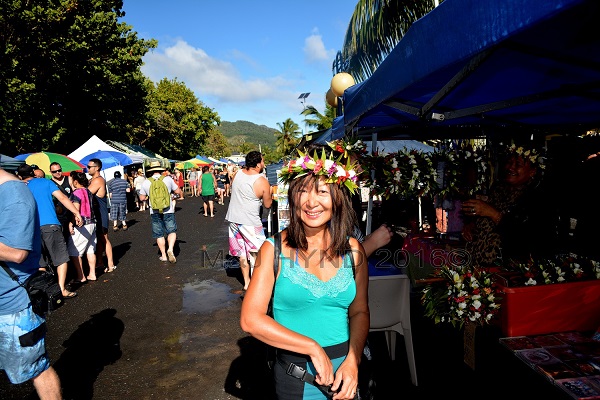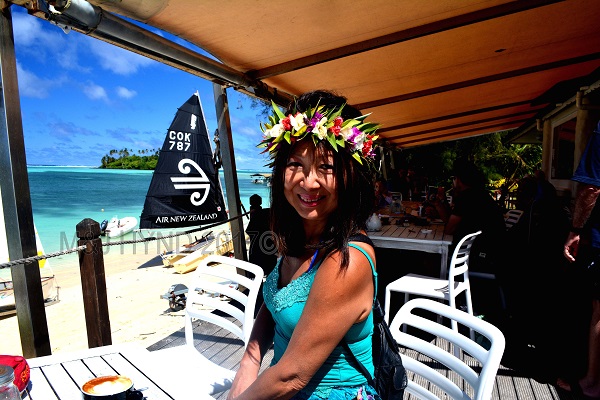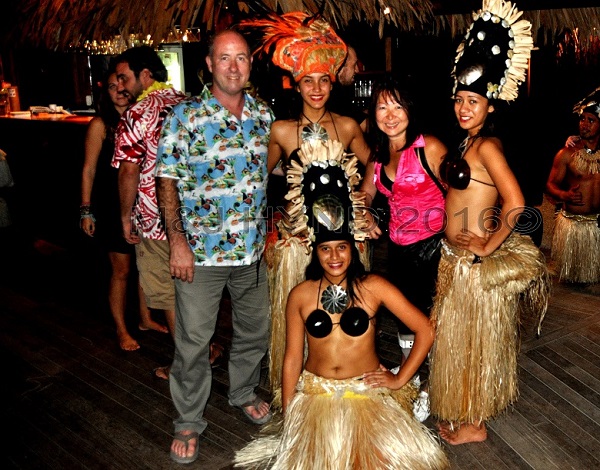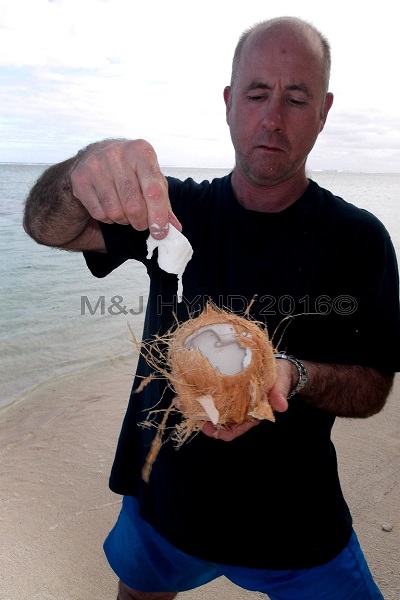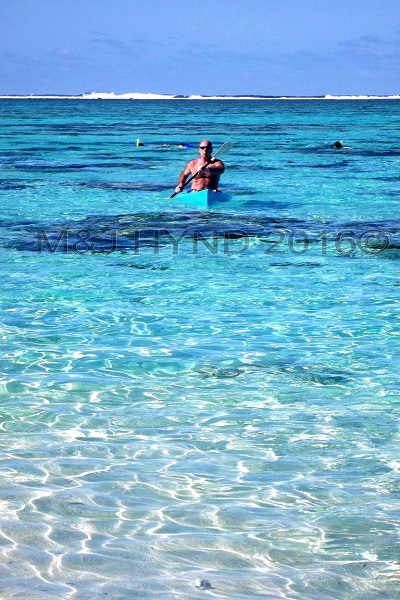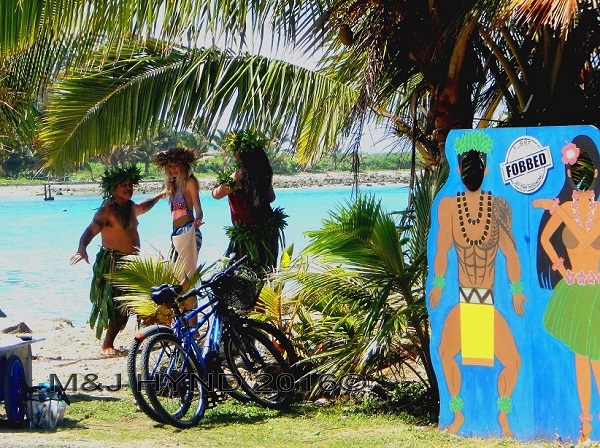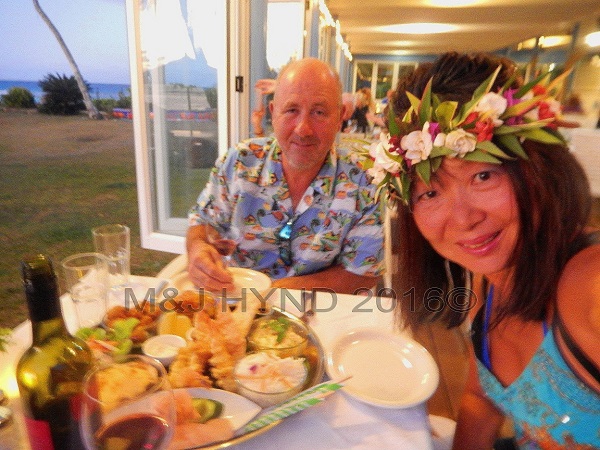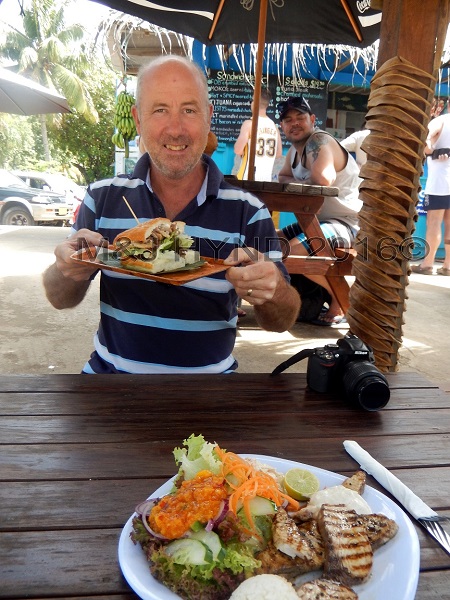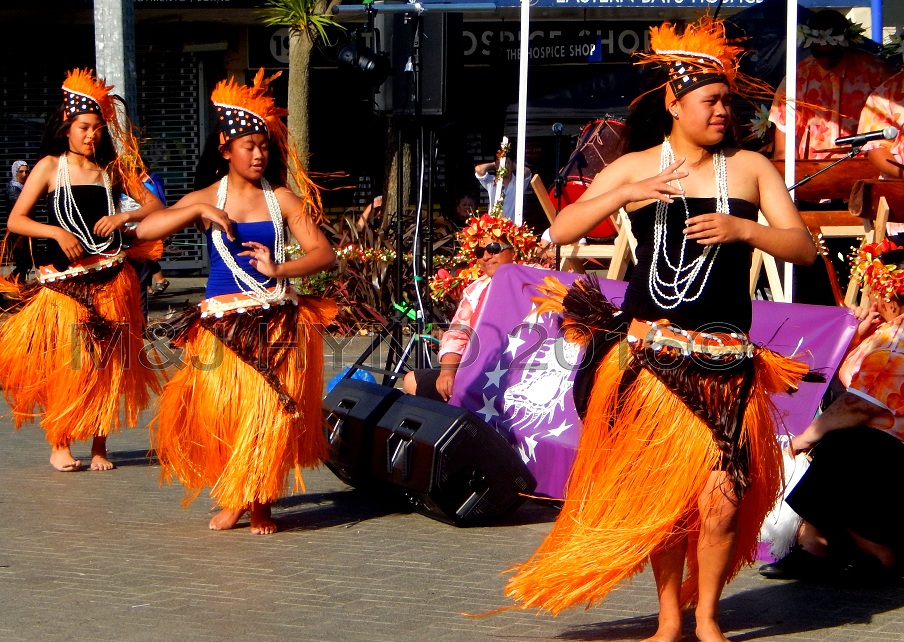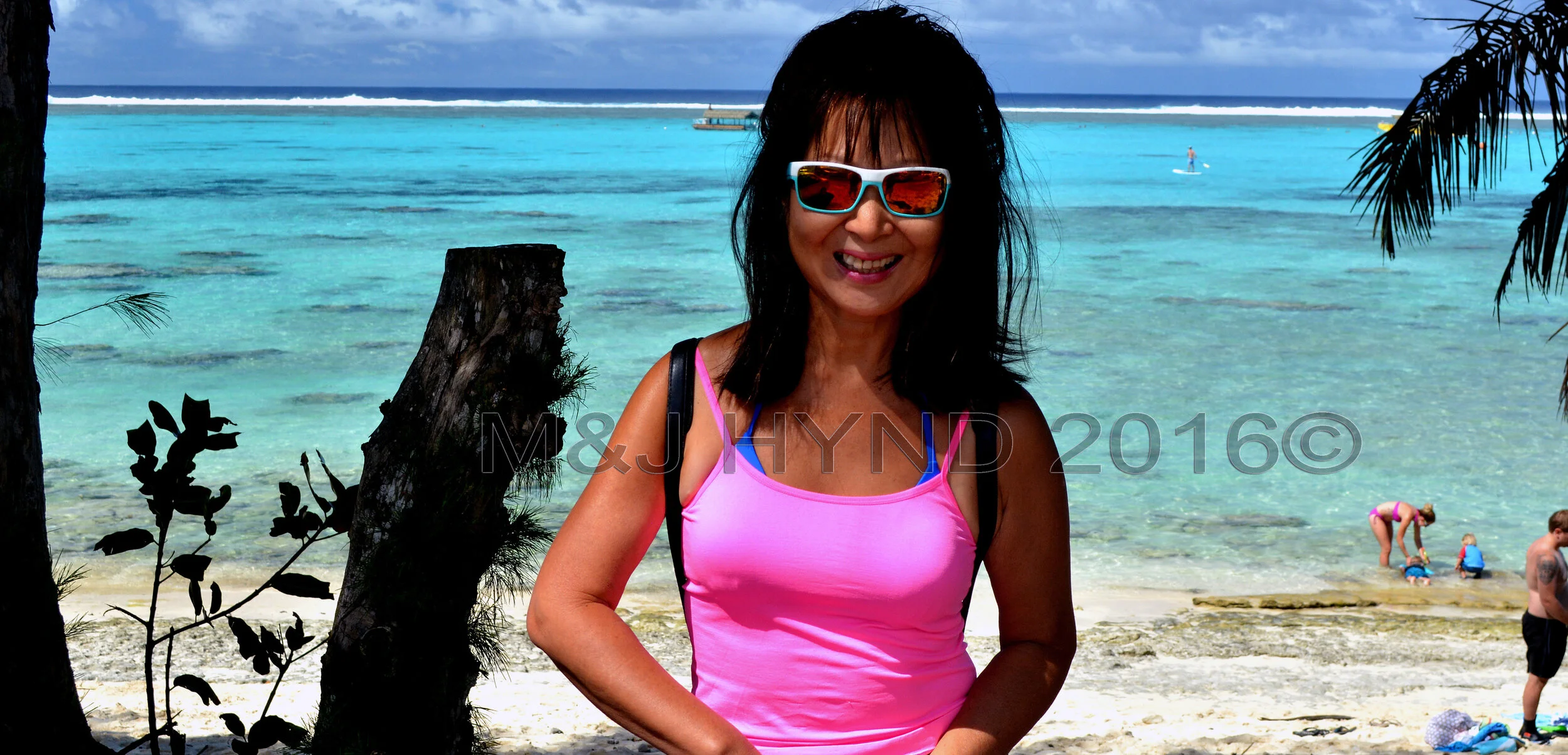Travel: Cook Islands
Far-off on castaway islands of the South Pacific is Rarotonga – a lush, tropical paradise. A journey to the Cook Islands, of which Rarotonga is the most populous, is the perfect getaway. Breathtaking, crystal-clear warm lagoon, vivid hibiscus, sweet scent of frangipani, jasmine and gardenia, exotic, alluring Rarotonga, Cook Islands, is one of the best kept secrets in the heart of Polynesia.
It’s the accessibility and ease of it all that makes Rarotonga so invitingly different. When Murray and I flew in from LA, it was perhaps 4am. We had been up forever, it seemed like, with eyes struggling to stay open. However, the Rarotongan welcoming committee woke us up a little in the queue for passport checking - a single entertainer, strumming his ukulele and singing local songs with a charming baritone voice. Island girls gave out fresh perfumed lei of frangipani and gardenias. Rarotonga, ... or Hawaii? This is indeed Rarotonga... hang on, am I dreaming?
The first few hours in Rarotonga were a blur as we were whisked away by the transport, soon after arrival. Our beach hut was in the Vaimaanga area, just a few yards to the spectacular beach with lovely undisturbed waters, coconut palms swaying in the breeze. Later, a few hundred yards away, at a resort well hidden by the foliage - a wedding was taking place, on the waters edge, solemn and beautiful. Wedded bliss in Rarotongan paradise - why not? We could have made a trip to Aitutaki, Cook Islands, just 45 minutes away by plane, the honeymooners' dream location, pristine, secluded incredible lagoon, but we were busy just taking it easy.
You know you have to slow down in a place where there are only two bus routes and they never arrive: Clockwise and Anti-Clockwise, very casual and on island time, but we also had our own rental car. The trip around the island only takes about an hour, if you make little stops along the way. We passed many churches, little stalls selling paw-paws and pineapples on the grassy verge, saw amazing views of the lagoon, lovely turquoise waters. Warning: we simply had to stop to take lots of photos of stunning beaches. At Fruits of Rarotonga, a marine reserve, has incredible clarity of water and a kaleidoscope of rainbow coloured friendly fish.
Dotted around the island but more towards the Muri end, were luxury hotels, blended /well into the islands vegetation. Banana liqueur? Not the typical winery it's an interesting stop in the jungle. Matutu boutique beers are brewed in small batches using only premium brewing ingredients, also located off the main road, as well as a bakery which had the freshest, fluffiest buns every day. We encountered delicious ika mata (marinated raw fish and coconut cream) in a cafe.
'Banana poke', a popular Rarotongan dessert reminded me of 'Nyonya kueh's in my hometown of Penang, called 'pengat'. The cassava cake, which we called 'kueh bingka' in Malaysia. Fancy that.
We enjoyed brunch in a nondescript cafe. The marinated fish, huge, fresh slabs of kingfish or marlin teamed with the pawpaw salad, a sensational combination. It was so impressive, we went back to try it again the next day.
At the Punanga Nui Saturday market there were fresh local delicacies, heavenly scented soaps, pareus, black pearls, handicrafts, art, and loads more.
Black pearls, did I hear? Not the Black Pearl of the fictional, swashbuckling Pirates of the Caribbean ship, but...' black pearls'? The pearl** is making a comeback in the world of high fashion jewellery and the South Pacific black pearl is distinctive. Known as the “Queen of Gems”, pearls have been coveted for centuries. The black-lipped mother of pearl shell */Pinctada margaritifera/* is a native of the South Pacific and thrives in the clear, unpolluted waters of the lagoons of the Northern Cook islands. Black pearls derive their lustrous color from the greyish-black nacre of the oyster shell. Yes, there are many different shades of black.
Also, another extremely rare pearl to be found in the Cook Islands: the natural Golden Pearl, one of the few remaining types of natural pearls left in the world today. Looking around the Punanga Nui Saturday market, black pearls are a thriving industry here in Rarotonga; the luminosity and shimmer of iridescent rainbow colours, are hard to beat.
We followed our noses. I had to watch my step and balance as it had rained very early in the morning and the ground hadn't dried enough yet. Queues to get delicious patisserie. Bought a haku lei (woven, floral head-dress) for me. A free cultural show too, featuring beautiful voices, talented young Polynesian dancers to the strumming of ukuleles and drums of the backing instrumentalists. Fresh tuna, about a metre in length for $30 each. We were going home the next day, pity...
We visited Te Vara Nui cultural village for the feast and Over-Water night show which was spectacular. Dancing hura-girls, fire-eaters, over the lake; we were drawn in, as the story unfolded. The Cook Island's traditional hura demonstrated graceful skill, an art form in song and dance, despite not being as well known as the Hawaiian hula and the Tahitian tamuré. The few days we had in Rarotonga re-charged our batteries; onward for NZ....
In December around Christmas-time in Auckland we happened to be in the vicinity of... what sounded like a performances of hura dancing and loud beating drums? Turning a corner, the Christmas Festival of East Cook Islanders cultural group was centre-stage. Even more performers than in Punanga Nui the Saturday market which featured the dance troupes and backing percussionists in Rarotonga. We were treated to a variety of very fast drum beats and lots of percussion instruments that make up the unmistakeable Cook Islander sounds and music. Rakahanga or Tiki Patana dances? - more than likely, it was fast and the hip action augmented by the grass skirts was a sight to behold! What more lovely treat this Christmas season – fantastic; we'll be back again a little it earlier to enjoy the performances next year..
